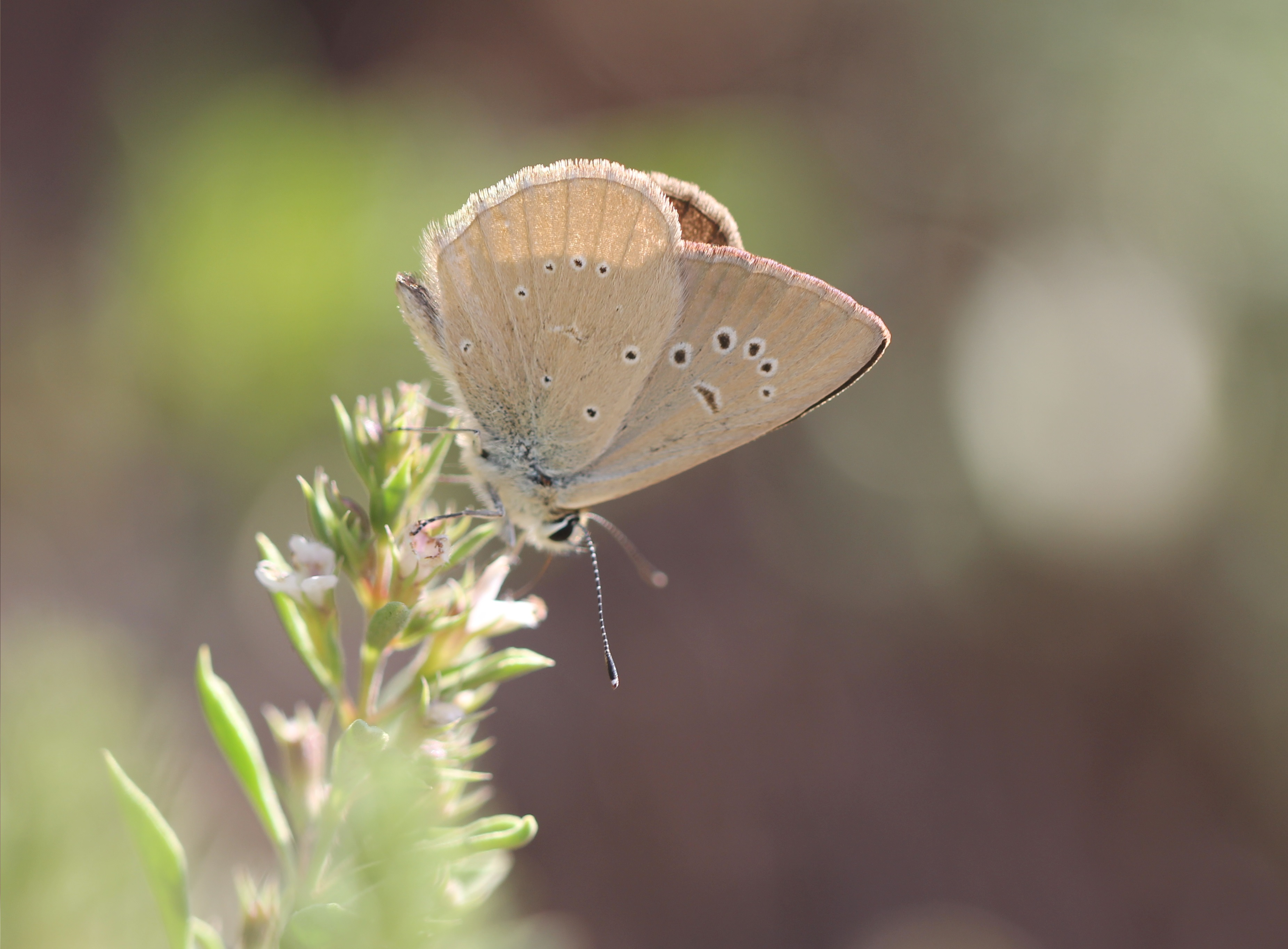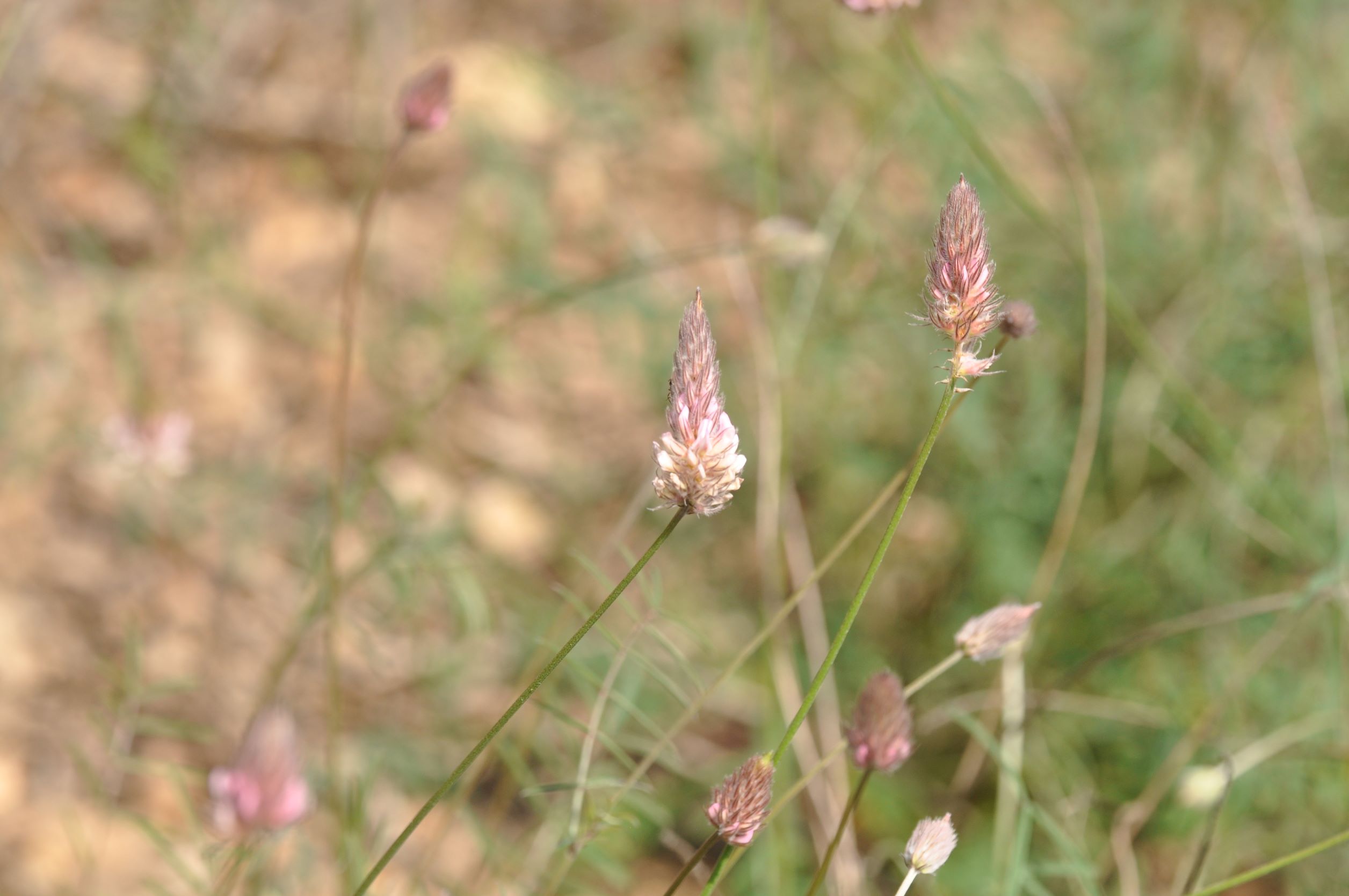|
Polyommatus aroaniensis orphicus / Kolev's Anomalous Blue
Orficusi i kafejtë
Lycaenidae - Polyommatinae
Polyommatus orphicus Kolev, 2005. TL: Hvoyna.
 
 
1a. Polyommatus orphicus, distribution map (09.i.2025).  Historical data ; Historical data ;  Additional data from the 2018 update ; Additional data from the 2018 update ;  New observations since the 2018 update. New observations since the 2018 update.
1b. Polyommatus orphicus ♂ underside. Lurë region, Albania (© Laurian Parmentier)
1c. Onobrychis sp., foodplant of many Polyommatus (Agrodiaetus) species. Greece (© Sylvain Cuvelier)
1d. Habitat of Polyommatus orphicus. Valikardhë, Albania (© Laurian Parmentier)
Description
♂♂
Small butterfly. Fw: 13-18 mm.
Ups: brown gc, unmarked.
Upf: conspicuous patch of hairy androconial scales, no discal spot.
Uns: light to medium yellowish-brown.
Unf: no cell-spot, usual pale ringed discal line and postdiscal spots that sometimes are vestigial or absent, rarely vestigial marginal margins. In nominal P. orphicus a visible white streak from discal spot to the postdiscal spot, not or rarely in other orphicus populations (also present in some populations of P. aroaniensis)
Unh: conspicuous white streak from base on v4 of variable length and width in nominal P. orphicus. Other populations white streak variable.
♀♀
Slightly smaller.
Ups: paler brown gc, smooth.
Upf: discal dark spot.
Uph: rarely with vague orange marginal lunules near anal area.
Uns: darker grey brown gc, markings bolder.
Unh: conspicuous white streak in nominal population but variable in other populations, mostly no marginal markings.
Similar species
The anomalous blues (brown Agrodiaetus) are variable and difficult to distinguish on external characters.
Ups and uns: gc depends on the freshness of the butterflies, a tendency for darker gc in the Polyommatus aroaniensis complex is mentioned.
The presence or absence and intensity of a white streak on the unh is only a trend but not a fully reliable criterium.
COI barcoding is distinctive for Polyommatus admetus, Polyommatus (aroaniensis) lurae, Polyommatus (aroaniensis) aroaniensis and Polyommatus ripartii.
Life cycle
Adults: single generation from end-June to August.
Egg: probably long stage.
Caterpillar: probably hibernating in the egg or as young larva.
Pupa: probably short stage.
Habitat
Polyommatus orphicus inhabits warm, open rocky and flowery places with scattered bushes on limestone, in Albania also found on mixed limestone-ophiolite substrate, flying from 500 up to 1500 m a.s.l.
Spatial requirement modest, population density can be high.
Foodplants
Caterpillars feed on Onobrychis sp.
Butterflies are feeding on a variety of available flowers in the habitat.
Distribution
Albania: very local (more research needed)
Balkan: AL - BG - BIH - GR - HR - NMK - MNE - RKS - RO - SLO - SRB
Europe: IB - IT - ALP - BAL - NWE - UK - SCA - EEU
For the moment, only recorded from the Balkan peninsula.
Conservation status
Polyommatus orphicus is not endangered.
Albanian Red List: DD.
IUCN Red List, category at the Mediterranean level: NA.
Useful links
Lepiforum
(url) Kolev Z. 2005. Polyommatus dantchenkoi (Lukthanov & Wiemers, 2003) tentatively identified as new to Europe, with a description of a new taxon from the Balkan Peninsula (Lycaenidae) — Nota Lepidopterologica 28(1): 25-34.
(url) Plebejus orphicus (Kolev, 2005) in The Butterflies of Bulgaria.
(url) Coutsis J. & De Prins J. 2005. A new brown Polyommatus (Agrodiaetus) from northern Greece (Lepidoptera: Lycaenidae) — Phegea 33(4): 129-137.
(url) Wiemers M., Keller A. & Wolf M. 2009. ITS2 secondary structure improves phylogeny estimation in a radiation of blue butterflies of the subgenus Agrodiaetus (Lepidoptera: Lycaenidae: Polyommatus) — BMC Evolutionary Biology 300. https://doi.org/10.1186/1471-2148-9-300
Kudrna O. 2019. Distribution of Butterflies and Skippers in Europe (Lepidoptera: Rhopalocera, Grypocera). 24 years Mapping European Butterflies (1995-2019). Final Report. Společnost pro Ochranu Motýlů, Prachatice, Czech Republic, 363 p.
(url) Parmentier L., Vila R. & Lukhtanov V. 2022. Integrative analysis reveals cryptic speciation linked to habitat differentiation within Albanian populations of the anomalous blues (Lepidoptera, Lycaenidae, Polyommatus Latreille, 1804) – Comparative Cytogenetics 16(4): 211-242.2022.
(url) Cuvelier S., Parmentier L., Qirinxhki X. & Paparisto A. 2023. Butterflies of Albania new data and going online. Fluturatat e Shqipërisë të dhëna të reja dhe faqja online (Lepidoptera: Papilionoidea) — Buletini i Shkencave te Natyres, Tirana university. 32(2022): 5-31.
(url) Cuvelier S. 2023. Albania, a country with unexpected, intraspecific genetic variability in butterflies (Papilionoidea: Nymphalidae & Lycaenidae). Balancing on a tightrope between species, subspecies, ESU's and haplotypes. — Lépidoptères 32(82): 32-40.
|
 xx
xx 


 Historical data ;
Historical data ;  Additional data from the 2018 update ;
Additional data from the 2018 update ;  New observations since the 2018 update.
New observations since the 2018 update.